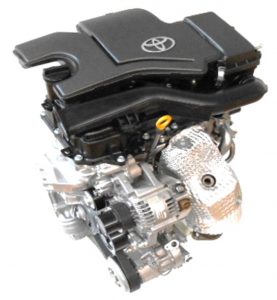New Aygo To Reap The Benefits Of Latest Toyota Engine Technology
Toyota’s 1.0-litre three-cylinder petrol engine has picked up a clutch of international awards since its debut in the original Aygo in 2005, commended for both its impressive economy and its distinctive driving character. Even greater rewards are now in the offing, as the unit becomes one of a new series of Toyota engines that achieve even higher fuel efficiency thanks to improved thermal and combustion management.
Set to appear in the new Aygo this summer, the engine achieves a maximum thermal efficiency of 37 per cent – a quality that, in combination with other fuel reduction measures, can deliver an improvement of almost 30 per cent in fuel consumption compared to current vehicles (under the official Japanese test cycle).
The version of the engine to be used in Aygo runs at a higher, 11.5:1 compression ratio than before, with the higher temperatures this creates countered by the adoption of a cooled exhaust gas recirculation system and adjustment of the engine’s valve timing.
More efficient combustion is achieved with help from a new-shape intake port and piston profile that create a strong tumble flow, with the air-fuel mixture moving in a more even, vertical swirl inside the cylinder.
The engine’s redesign has also made it even lighter, with features such as an exhaust manifold integrated into the cylinder head. Significant reductions have also been made in the amount of energy lost through friction in the engine.
These measures contribute to an estimated (pre-homologation) combined cycle fuel consumption figure of 68.8mpg, with CO2 emissions of 95g/km.
The first wave of Toyota’s engines to feature these improvements also include a 1.3-litre petrol unit which uses the Atkinson cycle, a system previously adopted by Toyota for its latest-generation Hybrid Synergy Drive powertrains. Worldwide, Toyota plans to introduce 14 new engine variations based on these units by 2015.










